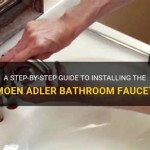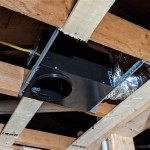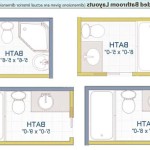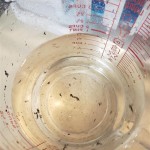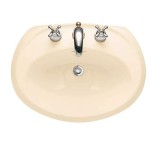How To Fix Bathroom Sink Leaking At Base
A bathroom sink leak at the base can be a common household plumbing issue. Identifying the source and understanding the repair process are essential for mitigating potential water damage and conserving water. Addressing this problem requires careful inspection, preparation, and execution of the correct repair steps. This article provides a comprehensive guide on how to diagnose and fix a bathroom sink leak at the base.
The "base" in this context typically refers to the point where the sink fixture either connects to the countertop or, in the case of a pedestal sink, where the sink meets the pedestal base. A leak at this location can stem from various causes, including faulty sealant, loose connections, damaged supply lines, or issues with the drain assembly. Prior to attempting any repairs, ensuring the water supply is shut off is critical to prevent further water damage and potential injury.
Identifying the Source of the Leak
The first step in resolving a bathroom sink leak is to pinpoint the exact origin of the water. This involves a thorough visual inspection, coupled with a process of elimination. Start by drying the area around the base of the sink completely. Then, slowly turn on the water and observe where the first signs of leakage appear. Look closely at the following areas:
The Faucet Base and Sealant: The juncture where the faucet meets the sink is a common point of failure. Check the sealant or caulking around the faucet base for cracks, gaps, or deterioration. Water can seep through these imperfections and pool around the base, eventually dripping down and appearing as a leak at the sink's base. Carefully examine the faucet body itself for any signs of corrosion or hairline cracks through which water may be escaping.
Supply Lines and Connections: Trace the hot and cold water supply lines from the shut-off valves to the faucet. Feel along the length of the pipes for any moisture. Pay close attention to the compression fittings where the supply lines connect to both the shut-off valves and the faucet. These connections can loosen over time, leading to slow but persistent leaks. Look for signs of corrosion on the fittings themselves, which can indicate a long-standing leak.
Drain Assembly: While the leak appears to be at the base of the sink, it's possible the water is originating from the drain assembly. Examine the area where the drainpipe connects to the sink basin. Check the condition of the rubber gasket or plumber's putty used to seal the drain flange to the sink. If this seal is compromised, water can leak down around the drainpipe and accumulate at the base of the sink. This can be further verified by filling the sink with water (after ensuring the drain stopper is closed) and checking for leaks around the drain opening without the faucet running.
The Sink Itself: In rare cases, the sink basin itself may have a crack or defect causing the leak. Inspect the entire visible surface of the sink, looking for hairline fractures. This is more common in older sinks or sinks that have been subjected to impact. If a crack is found in the sink basin, repairing the sink may be necessary instead of solely addressing the fixture connections.
Tools and Materials Required
Before commencing any repairs, it's crucial to gather the necessary tools and materials. Having everything on hand will streamline the process and minimize potential complications. The following list includes common items likely needed for fixing a leak at the base of a bathroom sink:
Adjustable Wrench: An adjustable wrench is essential for tightening or loosening plumbing connections. Having two wrenches of different sizes can be beneficial for gripping and counter-holding fittings.
Basin Wrench: A basin wrench, also known as a sink wrench, is specifically designed for reaching tight spaces under the sink, particularly for loosening or tightening faucet mounting nuts. This tool is especially helpful for sinks installed close to the wall.
Pliers: Slip-joint pliers or channel-lock pliers can be useful for gripping and turning various plumbing components. Avoid using excessive force, as it can damage the fittings.
Screwdrivers: A set of screwdrivers, including both flathead and Phillips head, will be needed for removing or tightening screws associated with the faucet or drain assembly.
Putty Knife or Scraper: A putty knife or scraper is used for removing old sealant or plumber's putty.
Plumber's Putty: Plumber's putty is a pliable sealant used to create a watertight seal around the drain flange.
Silicone Caulk: Silicone caulk is used to seal the gap between the faucet base and the sink. Choose a caulk formulated for plumbing applications and that is mildew-resistant.
Clean Rags or Towels: Plenty of clean rags or towels are essential for drying surfaces and cleaning up spills.
Bucket: A bucket is needed to catch any water that may drip during the repair process.
Gloves: Wearing gloves will protect your hands from grime and potential irritants.
Safety Glasses: Protective eyewear is recommended to prevent debris or splashes from entering the eyes.
Repairing the Leak
Once the source of the leak has been identified and the necessary tools and materials have been gathered, the repair process can begin. The specific steps will vary depending on the cause of the leak, but the following scenarios are common:
Replacing Sealant Around the Faucet Base: If the leak is originating from degraded sealant around the faucet base, the following steps should be taken:
- Use a putty knife or scraper to carefully remove all of the old sealant. Ensure that the area is clean and dry.
- Apply a bead of fresh silicone caulk around the base of the faucet, where it meets the sink.
- Smooth the caulk with a wet finger or a specialized caulk smoothing tool.
- Allow the caulk to cure completely according to the manufacturer's instructions before using the sink.
Tightening or Replacing Supply Line Connections: If the leak is coming from a loose or corroded supply line connection:
- Carefully tighten the compression fitting using an adjustable wrench. Avoid overtightening, as this can damage the fitting or the pipe.
- If tightening the connection does not stop the leak, disconnect the supply line and inspect the compression sleeve and nut for damage.
- If the compression sleeve or nut is damaged, replace the entire supply line. These are available at most hardware stores.
- When reconnecting the supply line, ensure the connection is snug but not overtightened.
Resealing the Drain Assembly: If the leak is originating from the drain assembly:
- Loosen the nut holding the drainpipe to the sink drain flange.
- Remove the drain flange from the sink.
- Clean the old plumber's putty or gasket from the flange and the sink surface.
- Roll a rope of fresh plumber's putty and place it around the underside of the drain flange.
- Insert the drain flange into the sink opening and tighten the nut from below.
- Remove any excess plumber's putty that squeezes out from under the flange.
- Alternatively, use a new rubber or silicone gasket according to the manufacturer’s instructions.
Addressing Cracked Sink Basin: If a crack is found in the sink basin, a simple sealant repair may not be sufficient. Depending on the size and location of the crack, specialized epoxy resins designed for plumbing repairs may be used. These resins require careful application and curing time. However, for significant cracks, replacing the sink is often the most reliable solution.
After completing the repairs, turn the water supply back on slowly and carefully inspect the repaired area for any signs of leakage. It is important to monitor the area for several hours, or even overnight, to ensure the repair is completely effective. If any leaks persist, repeat the troubleshooting steps and further investigate the source of the problem or consult with a professional plumber.

How To Fix Pipework A Tap Faucet Leaking Under The Sink

How To Fix A Leaking Bathroom Sink Paschal Air Plumbing Electric

Bathroom Sink Drain Leaking Around Threads Premier Plumbing Inc

Sealing A Leaky Faucet Base Plate Fix It Fast In 4 Steps Or Less

Gooseneck Faucet Leaking Around Base Easy Fix

How To Fix A Leaky Faucet True Value

New Bathroom Sink Drain Leaks At Threads

Faucet Leaking At Base Of Spout Irv2 Forums

Common Sink Leaks You Could Probably Fix Yourself

How To Fix Bathroom Sink Drain Leaks Underneath Gasket Threads Solved
Related Posts

